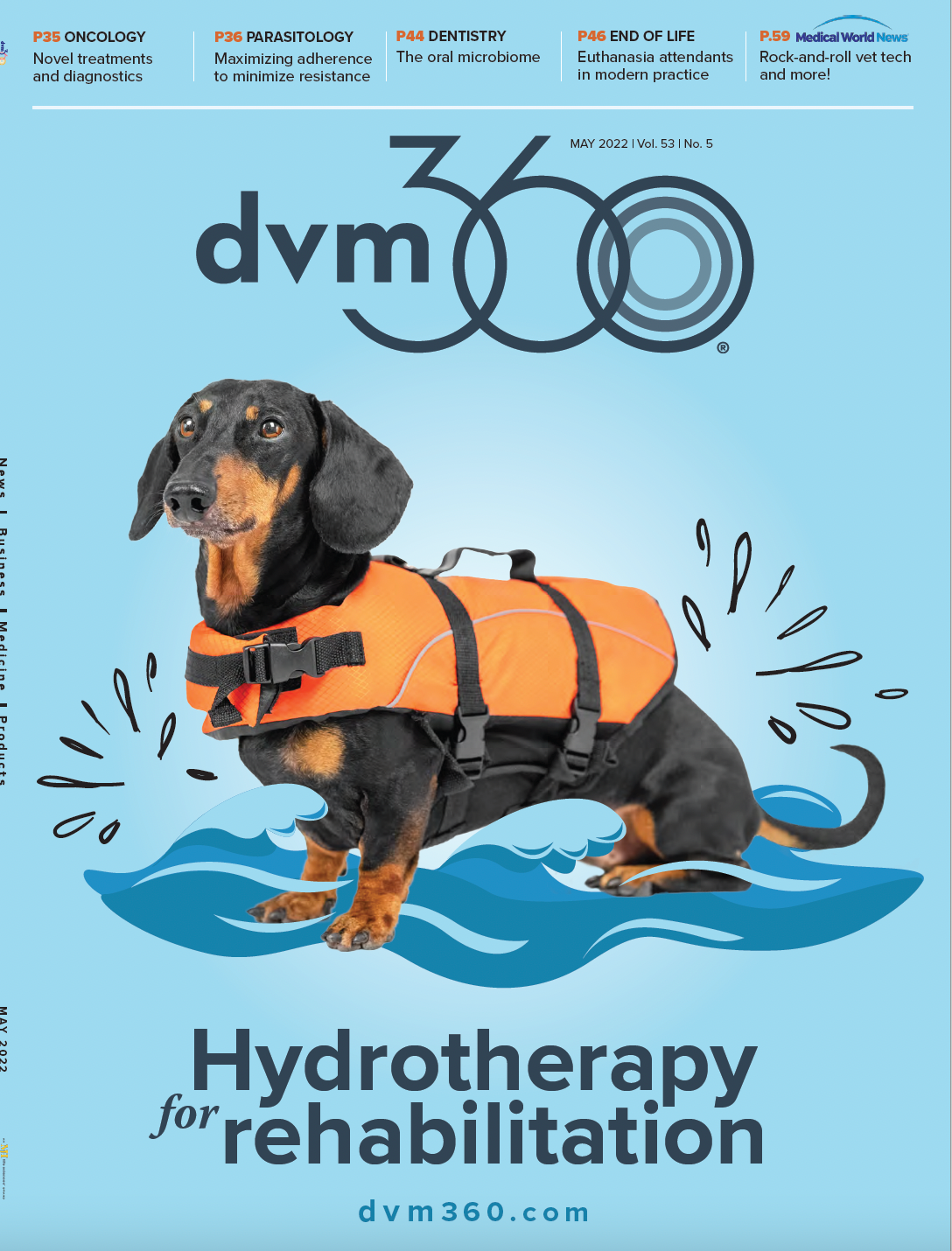I have been involved with veterinary medicine for over 25 years. I learned a long time ago that if you have a new idea, the hope is that you also have patience, because veterinary medicine doesn’t instantly embrace new ideas. However, I suppose many veterinary professionals are very familiar with Fear Free, LLC, which was launched in 2016 by Marty Becker, DVM, and the public is becoming increasing familiar with it, as well.
What is Fear Free?
- Previsit pharmacology—whether pharmaceuticals, nutraceuticals, pheromones, or a combination— and likely pairing it with behavior modification to provide pets with the ability to enter the clinic calmly.
- Making the visit as pet friendly as possible, using distractions such as high-value treats like peanut butter or tuna, soft music, and willingness to meet the pet emotionally without force, such as examining a cat in the carrier.
- Using touch gradient (predictability of what’s next), gentle handling, and more. Even the architecture of the clinic itself may be adjusted to be more Fear Free.
- Creating a pet parent–conscious environment. Understanding the stress level of clients coincides with the escalating stress level of their pet (and vice versa). Also, today’s pet parents want explanations for everything and, as 1 example, don’t want you disappearing with the pet in the “dreaded back” without a reasonable explanation.
Only 6 years later, a relatively short time in veterinary medicine, Fear Free came along at the right time, exceeding expectations, even of its founder. Today, the standard line ought never to be “just get the job done,” even if the pet is petrified. Veterinary professionals of a certain era were once taught just to get it done, and worrying about emotional fallout wasn’t even a consideration. In fact, no one knew or cared about such things.
Karen Overall, MA, VMD, PhD, DACVB, CAAB, has said for years, “Fear is the worst thing a social species could experience, and it causes permanent damage to the brain.”1
In my personal experience, I imagine many animals believe they are going to die when they arrive at the veterinary clinic, and that terror may occur at the mere sight of the carrier for some. I have no data to back it up, but veterinary professionals have most likely seen the sheer terror in patients. I assume these individuals believe they’re fighting for their lives. It does not need to be this way, and today’s pet parents, who are more attuned to their “fur baby’s” feelings than ever before, aren’t going to allow for this.
It’s all about perception. If that client (particularly millennials) believes your team has “manhandled” their cat or if a practice calls in the National Guard to wrestle a dog, it’s over. Worse than losing a client, the description of the epic battle could be all over the Internet in an hour.
Of course, the quality of an exam is skewed when a patient is terrorized and there is a poten- tial that the patient may be injured, not to mention an increased risk of injury to a member of the veterinary team. Again, as Becker repeatedly says, “It’s simple: Today, we know better. We can take the ‘pet’ out of ‘petrified.’”
To be transparent, I’ve been a Fear Free speaker from the beginning, and here is what I know: Fear Free is a resounding success because it works. Today, there are over 84,000 Fear Free Certified Professionals in the US and Canada and many more in over 50 other nations, with over 150 practices Fear Free Certified.2 What’s more, many veterinary schools encourage or even require Fear Free as a part of their curriculum.
Watching the impact of Fear Free, dog trainers, animal behavior consultants, and groomers approached Dr Becker asking his team to create certifications for their professions, which has since happened. Additionally, the Fear Free Shelter program was launched in 2019.
A 2021 study demonstrates that using Fear Free tools and techniques makes a difference in patient visits. When seeing a Fear Free veterinarian, vet visits increased overall 2%, and 3.5% among cats.2,3
In a study made up of 41 Fear Free Certified Practices, several key performance indicators were identified and measured. Fear Free Certified Practices continually improved their own performance after 3 years of implementing Fear Free, as follows4:
- 14% increase in the number of patients per practice;
- 23% increase in revenue per practice;
- 8% increase in drugs and medications;
- 22% increase in vaccines;
- 37% increase in booking forward feline patients; and
- 44% increase in booking forward for canine patients.
In 2017, Fear Free launched Fear Free Happy Homes, a website for pet parents. With so much misinformation online, this site offers a dependable source of companion animal information, with content authored by experts and reviewed by experts, such as boarded veterinary behaviorists or technicians boarded in behavior, often presented in an entertaining manner.
Indeed, emotional well-being matters, as scientists and even the courts now acknowledge our pets are sentient beings, but consider emotional well-being on both sides of the exam table. I know of 0 veterinary professionals who went into this industry to wrangle pets and support them being downright terrified. Of course, it makes veterinary professionals feel better about their jobs, and one thing the profession can use—especially right now—is job satisfaction.
Steve Dale, CABC, writes for veterinary professionals and pet owners, hosts 2 national radio programs, and has appeared on TV shows, including Good Morning America and The Oprah Winfrey Show. He is on the dvm360® Editorial Advisory Board as well as the boards of the Human Animal Bond Association and EveryCat Foundation. He appears at conferences around the world. Visit stevedale.tv.
References
- Editorial staff. Getting to know a little more about Fear Free. American Veterinarian. August 2, 2016. Accessed April 18, 2022. https://www.dvm360. com/view/getting-to-know-a-little-more-about-fear-free
- Dunn LS, Wood F. The continual business growth of Fear Free certified prac- tices. Fearfreepets.com. 2010. Accessed April 18, 2022. https://fearfreepets. com/wp-content/uploads/2020/10/The-Continual-Business-Growth-of-Fear- Free-Certified-Practices-October-2020.pdf
- Dunn LS. The positive impact of Fear Free certification in veterinary practices. Fearfreepets.com. 2019. Accessed April 18, 2022. https://fearfreepets.com/ wp-content/uploads/2019/11/The-Positive-Impact-of-Fear-Free-Certification-in- Vet-Practices.pdf
- Dunn LS, Wood F. Fear Free: The long-term benefits for pets, people, and the profession. Fearfreepets.com. October 1, 2021. Accessed April 18, 2022. https:// fearfreepets.com/wp-content/uploads/2021/09/Fear-Free-The-Long-Term- Benefits-for-Pets-People-and-the-Profession-October-2021.pdf

